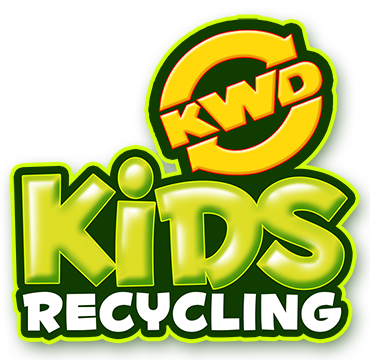
 Recycling
Recycling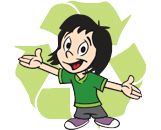
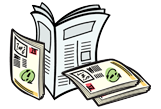
Paper is the main form of waste created by schools, making up at least a quarter of all its rubbish
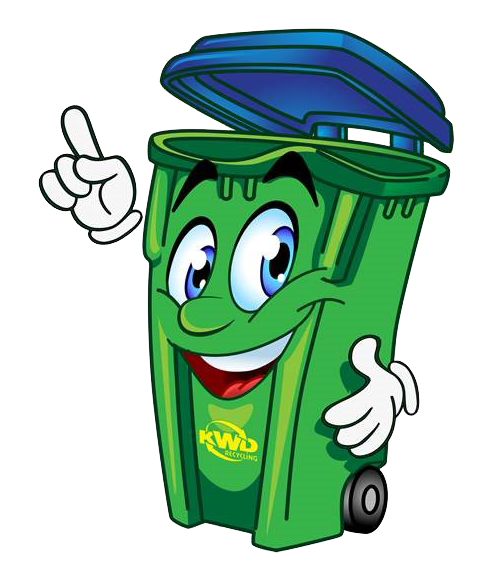
Set up a paper collection scheme for each classroom by making ‘paper only’ boxes for the pupils and teachers to put used paper in. Make sure they are clearly labeled and put in an obvious place
Involve pupils by inviting them to create posters and bright labels for the recycle bins
1. Used newspapers and magazines are collected from paper banks and recycling schemes and transported to the paper mill. White paper is also collected, but the two different types of paper are taken to different mills and recycled separately.
2. At the paper mill, conveyor belts feed the old paper into the Fibre Preparation Plant, where it goes into the giant pulpers.
3. Water and chemicals are mixed with the waste paper inside the pulpers. This washes the ink and other contaminants off the paper fibres. The soggy, mushy paper is now called pulp.
4. The pulp is then injected between two wire meshes to form a damp paper sheet. This is dried to form the new recycled paper.
5. The dried paper is polished and then rolled into jumbo reels, some 9.2 metres wide and weighing more than 30 tonnes. The paper reels are then cut into smaller sizes to be sold.
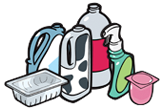
Recycling just one plastic bottle can save the same amount of energy needed to power a 60 watt lightbulb for 6 hours!

It takes about 25 recycled soft drink bottles to make one fleece jacket.
Plastic can take up to 500 years to decompose.
– There are about 50 different types of plastic. The main types include:
HDPE – Opaque bottles
PVC – Transparent bottles, with a seam running across the base
PET – Transparent bottles, with a hard moulded spot in the centre of the base.
• Always Clean bottles before recycling them.
• Buy plastic bottles in bulk whenever possible to reduce packaging waste.
1. Plastic bottles for recycling are collected from bottle banks or from your recycling bins.
2. The bottles are taken away by lorry to be sorted and then squashed into big blocks.
3. The blocks are then taken to a factory, where they are cut up into small flakes – like little, colourful corn flakes.
4. The flakes are washed and dried, then taken away to be melted and made into new plastic objects.
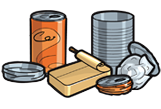
A wide range of goods that you buy in the shop are packaged in cans including drinks, meats, fruits and animal foods.

– By using recycled aluminium, 95% of the energy needed to produce cans from raw materials is saved.
– Many cans, particularly soft drink cans, are made from aluminium. Most of the bauxite ore used to make aluminium cans is mined in the tropics, including many tropical forests.
– Over 100 million aluminium cans are purchased in Ireland every year.
1. The consumer throws aluminium cans and foil into a recycle bin.
2. The aluminium is then collected and taken to a treatment plant.
3. In the treatment plant the aluminium is sorted and cleaned ready for reprocessing.
4. It then goes through a re-melt process and turns into molten aluminium, this removes the coatings and inks that may be present on the aluminium.
5. The aluminium is then made into large blocks called ingots. Each ingot contains about 1.6 million drinks cans.
6. The ingots are sent to mills where they are rolled out, this gives the aluminium greater flexibility and strength.
7. This is then made into aluminium products such as cans, chocolate wrapping and ready meal packaging.
8. In as little as 6 weeks, the recycled aluminium products are then sent back to the shops ready to be used again!
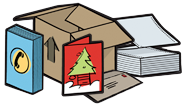
Cardboard is just a thicker, stronger version of paper. It is often used for packaging and to make boxes and other containers, because it is so lightweight and strong.

It is important to recycle cardboard because, like paper, it is made from wood pulp from trees. Preserving forests benefits our rivers and lakes, as well as the air we breathe. By recycling cardboard and paper, you can also save the homes of many different types of wildlife..
Paper and cardboard makes up 32% (nearly one-third) of all the household rubbish that we throw away.
Cardboard consists of two different types of paper: smooth paper, called liner; and crinkly paper, called fluting. Cardboard is made up by putting three layers together – a liner on the top, a liner on the bottom and the crinkly fluting in the middle, which makes it strong.
Some recycled cardboard is so strong that you can use it to make things that might have otherwise been made from wood or metal, like furniture, large containers – even dog kennels!
1. Used cardboard is picked up from local recycling centres, as well as from shops, factories and offices.
2. All the cardboard is sent to a waste paper merchant where it is made into large bales, ready for transportation to the paper mill.
3. At the paper mill, a fork lift truck lifts the bales onto a conveyor, where it is taken into the pulper.
4. In the pulper, water and chemicals are added to make a soggy, mushy pulp. The pulp is cleaned, de-inked and then dried into flat rolls of paper.
5. The large rolls of new recycled paper are cut into smaller size rolls for the customers who will make the different papers into cardboard for new boxes, containers and packaging.
Recycling means to use something again.
Newspapers can be used to make new newspapers. Aluminum cans can be used to make new aluminum cans. Glass jars can be used to make new glass jars. Recycling often saves energy and natural resources through conservation.
It almost always takes less energy to make a product from recycled materials than it does to make it from new materials. Using recycled aluminum scrap to make new aluminum cans, for example, uses 95 percent less energy than making aluminum cans from bauxite ore, the raw material used to make aluminum.
Natural resources are riches provided courtesy of Mother Nature. Natural resources include land, plants, minerals, and water.
By using materials more than once, we conserve natural resources. In the case of paper, recycling saves trees and water. Making a ton of paper from recycled stock saves up to 17 trees and uses 50 percent less water!
So start recycling today and help Mother Nature to stay healthy!